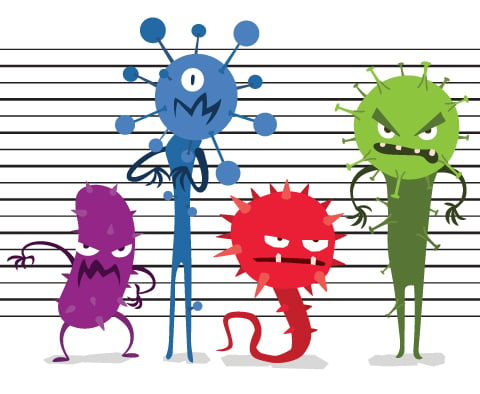Human Papilloma Virus (HPV)
HPV is the most common sexually transmitted infection (STI). It causes warts, mainly in the genital or rectal areas of both men and women. There are more than 100 different strains of the virus, and the type and appearance of the wart depends on the strain.
Approximately 79 million people in the United States alone have an HPV infection, and about 14 million people become newly infected each year. Anyone who is sexually active can get HPV and genital warts.
For information about oral HPV screening (which is a separate test), please see the Oral HPV Infection Page.
HPV Symptoms
You can have an HPV infection and not have any symptoms. Because some strains of HPV are considered “high risk,” many women get tested even if they don’t have symptoms.
“Low-risk” types of HPV generally cause warts in the genital area. The warts can appear as a small bump or group of bumps, and they can be small or large, raised or flat, or shaped like a cauliflower. They are often gray or pink.
MicroGenDX Tests Used in Diagnosing HPV
Sometimes an HPV test is done in the clinic at the same time as a PAP test, so that both can be evaluated in a lab.
An evaluation and culture (growing microbes from your sample in a lab) are often used to diagnose HPV. However, standard cultures may come back negative even when you actually do have an infection, and that means your infection won’t be treated. A MicroGenDX test detects the DNA of all microbes in your sample, along with how much of each is present, and uses that information to identify causes of your infection and the drugs that can best treat it. You can order that “HPV” test and get sampling instructions here:
https://microgendx.com/product/hpv-panel-dm-intl/
Providing Samples for MicroGenDX Tests
You will need to provide a vaginal swab sample for this test. It’s very important to obtain a proper sample by following the instructions for collecting the sample, as well as when packaging and shipping it.
Everything you need to know about taking a sample is included with your test, and is also available online on the product page. The instructions contain illustrations that will help you collect a sample without contaminating it. For example, you will need to wash your hands thoroughly and clean your genital area with soap and water so that bacteria on the skin aren’t included in your sample. Take care not to contaminate the sample with period blood during menstruation.
Medical Specialties Treating HPV
HPV can be treated by a primary care physician, urologist, or OB-GYN
How HPV is Treated
Various topical treatments may be used to remove the wart, either completely or a bit at a time. If those medications don’t work, other methods can be tried, including cryotherapy (freezing with liquid nitrogen), electrocautery (burning with an electric current), or surgery.
References
- https://www.mayoclinic.org/diseases-conditions/hpv-infection/symptoms-causes/syc-20351596
- https://www.cdc.gov/std/hpv/stdfact-hpv.htm
- https://www.merckmanuals.com/professional/infectious-diseases/sexually-transmitted-infections-stis/human-papillomavirus-hpv-infection
- https://medlineplus.gov/ency/article/007534.htm

